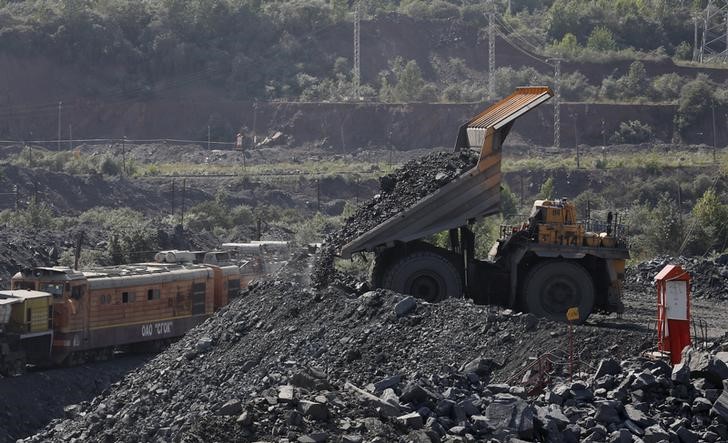(The opinions expressed here are those of the author, a columnist for Reuters.)
By Clyde Russell
LAUNCESTON, Australia, Sept 19 (Reuters) - There is an almost universal expectation that iron ore prices will start to retreat soon, reversing some of the 29 percent surge this year that has seen the steel-making ingredient become one of the unexpected commodity top performers.
Much of iron ore's gains in 2016 have been driven by strong demand from China, with imports up 9.3 percent to 669.65 million tonnes in the first eight months of the year from a year ago.
And as yet, there is no sign that China's appetite for imported iron ore is waning, with vessel-tracking and port data suggesting September will be another strong month for the buyer of about two-thirds of global seaborne cargoes.
Data compiled by Thomson Reuters Supply Chain and Commodity Forecasts estimates that 94.4 million tonnes will arrive at Chinese ports by the end of the month.
If the final number is close to the estimate, it would make September's imports the second-highest on record, and the strongest so far this year.
It's worth noting that the ship-tracking data doesn't exactly tally with official Chinese customs data because of variability around when cargoes are discharged and when they are booked as having been offloaded for customs purposes. There are also differences in the estimated volumes carried by vessels.
For the first eight months of the 2016, the ship-tracking data showed iron ore imports as 3.3 percent below the official customs numbers.
Nonetheless, it would seem likely that September's iron ore arrivals will be strong, with 49.23 million tonnes discharged at Chinese ports in the first 18 days of the month, a rate that if continued for the rest of the month would result in imports well above 80 million tonnes.
This means that despite concerns about steel over-production in China, iron ore demand has yet to show any meaningful sign of a slowdown.
However, spot prices for iron ore in China .IO62-CNI=SI have eased over the past four recent weeks, ending at $55.50 a tonne on Sept. 14, the last day of trade prior to last week's Chinese public holidays.
This is down from the recent peak of $61.60 a tonne on Aug. 23 and also 19.2 percent below the high for 2016 of $68.70 reached on April 21.
MARKET TURNS PESSIMISTIC
It appears some pessimism is creeping into the market amid media reports that China will ramp up its efforts to cut excess steel capacity and ongoing measures by countries around the world to impose duties on what they believe are too cheap Chinese steel imports.
It remains to be seen as to whether these measures will make a meaningful dent in China's actual steel output, with evidence so far this year suggesting very limited success, with January-August steel output down a mere 0.1 percent to 536.3 million from the same period a year earlier.
It appears as if iron ore market participants are still somewhat disbelieving of this year's rally and have turned cautious on the outlook for the coming months.
There is the likelihood of increased seaborne supply as Roy Hill, the last of the major new mines in top producer Western Australia state, ramps up output and Brazil's Vale VALE5.SA gets closer to starting up its giant 90 million tonnes a year S11D project.
On the positive side for supply, it appears that so far higher iron ore prices haven't led to a resurgence of Chinese domestic output, with official data aCNPDFEOR showing July's production was 4.4 percent below that of June's and year-to-date output was some 6.4 percent below that in 2015.
Lower domestic iron ore output, coupled with declining grades, helps explain the higher demand for imported material, as does the move by steel mills to buy higher quality ore in order to cut down on pollution.
The somewhat ambiguous state of the steel and iron ore markets in China is reflected in a Reuters poll of analysts, published on Sept. 17.
The average forecast for 62-percent iron ore cost-and-freight to China is expected to hit $46.50 a tonne in 2017 and $48 in 2018, down from an expected $50.90 for 2016, the poll showed. means that the analysts are expecting prices to weaken from where they are currently, but not collapse.
The market consensus is a reasonable reflection of the current situation, where supply is getting closer to peaking and demand is holding up better than many may have expected.
The joker in the pack is, as always, the outlook for China's vast steel sector and how it resolves its over-capacity issues. (Editing by Himani Sarkar)
